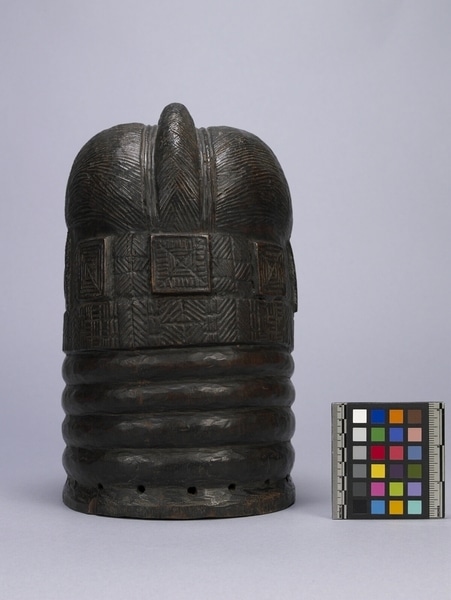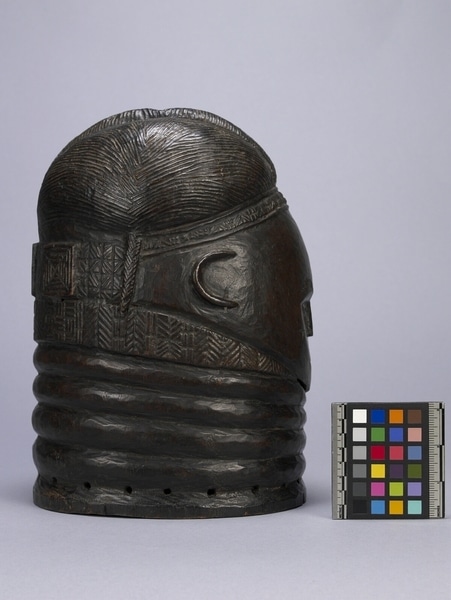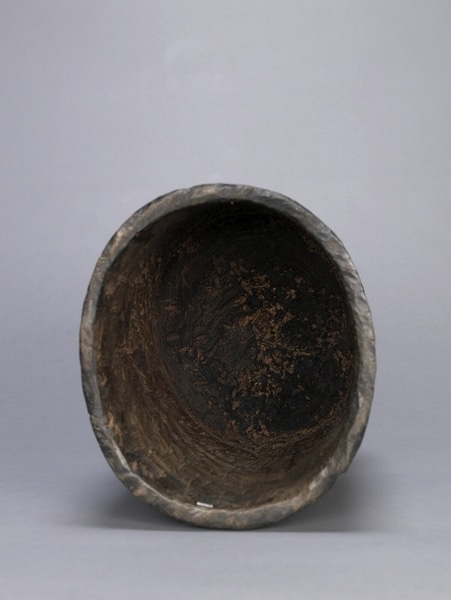Helmet Mask Item Number: 1373/13 from the MOA: University of British Columbia





Description
Dark-brown, round, wooden mask. Cylindrical-shaped female head with small centralized face. Face has heavy eyebrows, slit eyes, and a small incised mouth. Nose is straight and flares out slightly at bottom. From the chin downwards, there are five rings, with the bottom ring perforated by twenty holes. Hair is shown as parted in the middle by a protruding centre braid-like feature and two small braids are found on either side of the head behind the ears. A head band between the braided hair and the forehead is decorated with incised geometric designs. At the back of the head, there are two wider bands.
History Of Use
The sowei, or bundu, mask is made by men but worn as a dance mask by women in the Sande women's society, during girls' initiation camps. There they are prepared for marriage, trained in both domestic and economic pursuits and in singing and dancing. The masked dancers visit the camps to remind the girls of the ideals of female beauty and virtue. When the girls leave, they are considered to be women ready for marriage. During a dance, the mask is worn by a "ndoli jowei" performer, with a full costume concealing the dancer's identity.
Item History
- Made in Sierra Leone
- Owned by Helen Purkis before May 30, 1989
- Received from Helen Purkis (Donor) on May 30, 1989
What
Who
- Culture
- Mende
- Previous Owner
- Helen Purkis
- Received from
- Helen Purkis (Donor)
Where
- Holding Institution
- MOA: University of British Columbia
- Made in
- Sierra Leone
When
- Ownership Date
- before May 30, 1989
- Acquisition Date
- on May 30, 1989
Other
- Condition
- fair
- Current Location
- Case 98
- Accession Number
- 1373/0013